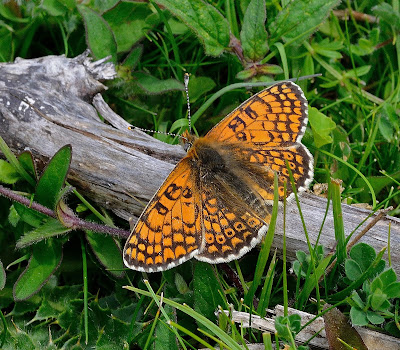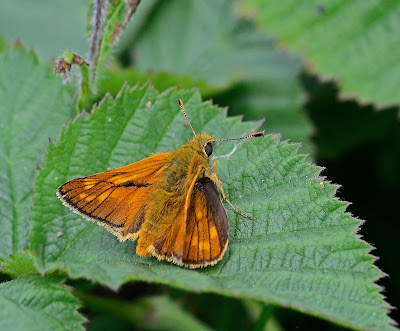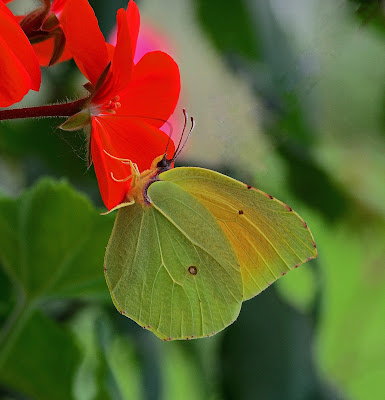At this time in the season a walk up to West High Down via a bridleway can be a chance to see the first Dark Green Fritillaries of the year.There was a report of two Dark Greens on nearby Brook Down a few days ago.However despite my best efforts none was in evidence today.
The bridleway that leads to the Down is sided by brambles and bushes to the north and more open ground to the south which perhaps are old quarry workings.Here, plenty of chalk downland plants grow and bloom which attracts a variety of butterflies due too to its sheltered aspect.The most common species today were Common Blue and Brown Argus although I was surprised to see a pristine Glanville Fritillary.It is somewhat out of its usual area which is a short way down the coast but they do get around and can turn up quite a way inland.As on the Down, there were good numbers of Large Skippers and I also came across a Small Tortoiseshell uploading salts from the track.















































